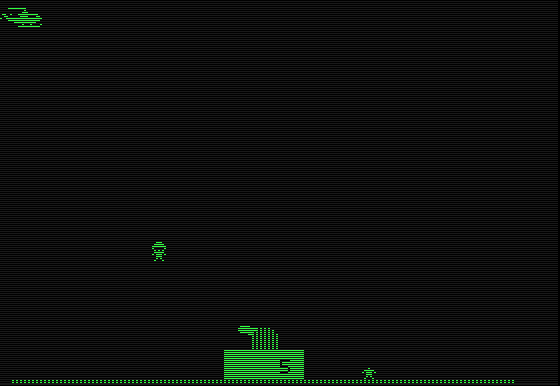Assignment 3: Transforms
Due date: Wednesday, Oct 6
This assignment is to get some practice with geometric transforms.
It will build on the cannon model you made for assignment 2.
If you are not happy with your cannon, you can borrow one from
someone else in the class.
The purpose of this assignment is to get the transformations right, not to
get a perfect cannon model, so if your cannon barrel has holes in it or other
defects this is only an aesthetic problem.
Part 1: setup
- Run the cannon modeling code to double-check that your model looks OK.
- Delve into the code to make sure the cannon barrel is separate from the
rest and can be transformed individually.
Part 2: Animating the cannon
Give the cannon the ability to move around, rotate, and elevate the barrel.
Create a location vector for the cannon, plus orientation parameters (angles).
Have a single world transformation matrix that governs the movement of the
cannon body (derived from the parameters using ISROT) and a second matrix that
is applied to the barrel, rotating the barrel through the angle of elevation
and translating the barrel away from the center of the cannon, if necessary.
Assign a set of keys to allow moving, rotating, and aiming the cannon
interactively. I suggest IJKM for moving and ASDF for rotating and aiming.
Part 3: Firing the cannon
Now you will add the ability to fire the cannon.
You will need to make a model for the shell, but you don't have to spend any
great effort in doing so: a box is sufficient.
Shells should originate from
the cannon at the press of a key,
and be fired in the direction the barrel is pointing. Note that
you can't use the cannon transformation as a root transformation for the
shells (otherwise they are somehow "guided missiles" and will rotate as the
cannon barrel rotates, which is not what is intended). Instead, use the cannon
parameters to get a starting position and direction for the shell, and
have it move forward as time passes. (Store a position vector for the
shell and create a transformation matrix for
the shell based on the current position whenever you need to draw it.)
Remove the shell when it has travelled
far enough.
Next, build a "helix shot pattern" shell. This shell will use the same
base position as the previous type, but its trajectory will include an
"orbit" element: a translation plus rotation off the central trajectory.
The angle of rotation of the orbit should be computed using GameTime so
that it changes as the shot moves; overall, the shell will follow a helical path. Use ISROT to get the world transformation for the shell.
If you are interested, you can quite easily make a multi-shell pattern by having several shells with different orbital angles and distances.
Part 4: bonus
For a bonus of up to +10%, add a third type of shells to the cannon. This type
should fire in a ballistic arc (i.e., it should be subject to gravity).
You will need to track the shell's velocity and modify it each timestep by
-g*dt for a gravitational acceleration g.
Handing it in
Hand in your project using WebCT.
The easiest thing to do is to create a single zipped folder and submit
that, rather than all the individual files. It might take a while to
upload, so be prepared to take a little break while the files are in
transit.
Reference art
The simple cannon of the classic game Sabotage:


